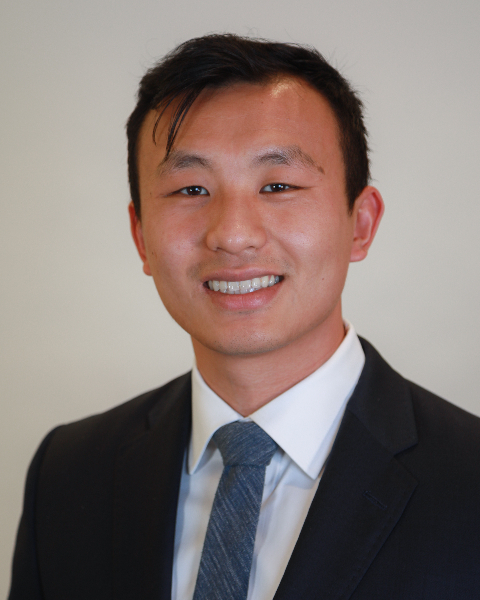PQA 01 - PQA 01 Lung Cancer/Thoracic Malignancies and Diversity, Equity and Inclusion in Healthcare Poster Q&A
2194 - Early Cardio-Oncology Intervention in Thoracic Radiotherapy: Results of the Cardiac Aggressive Risk Mitigation (CARMA) Pilot Study
Sunday, September 29, 2024
2:45 PM - 4:15 PM ET
Location: Hall C
Screen: 7

Samuel Zhang, MD
Cedars-Sinai Medical Center
Los Angeles, CA
Presenter(s)
S. C. Zhang1, J. O. Gasho1, C. Eno2, K. Silos1, F. Pendergast3, W. Zhang2, E. Vail2, M. Kamrava1, B. Hakimian1, A. J. Mirhadi1, R. H. Mak4, A. Nikolova5, and K. M. Atkins1,5; 1Department of Radiation Oncology, Cedars-Sinai Medical Center, Los Angeles, CA, 2Department of Pathology, Cedars-Sinai Medical Center, Los Angeles, CA, 3Cancer Clinical Trials Office, Cedars-Sinai Medical Center, Los Angeles, CA, 4Department of Radiation Oncology, Dana-Farber Cancer Institute/Brigham and Women’s Hospital, Harvard Medical School, Boston, MA, 5Department of Cardiology, Cedars-Sinai Medical Center, Los Angeles, CA
Purpose/Objective(s): While there is increasing recognition of the morbidity of cardiovascular disease (CVD) in cancer survivors, including accelerated atherosclerosis following thoracic radiotherapy (RT), patients are frequently under-optimized for CV risk. Existing primary prevention models do not include cancer treatment(s) as CV risk factors, underscoring the usefulness of incorporating additional CV risk markers to enhance optimization. To address these critical gaps in CV risk assessment, we launched a prospective single-arm pilot study measuring the feasibility and impact of early cardio-oncology intervention in patients treated with thoracic RT. Materials/
Methods: Eligible patients had Stage I-III or oligometastatic Stage IV malignancy (any histology) treated with thoracic RT (prescription dose =30 Gy) with the heart in/near the treatment field. Participants were referred to cardio-oncology for early consultation (defined as occurring prior to or during RT), including assessment of all potentially cardiotoxic therapies, to develop a personalized CV risk mitigation plan. Coronary artery calcium (CAC) was measured from RT planning scans. The primary endpoint was adherence to cardio-oncology consultation. Secondary endpoints were cardio-oncology CV medication intervention rate and patient-reported intervention perspectives.
Results: Twenty patients were enrolled. The median age was 71 years. Most were female (13/20), had primary non-small cell lung cancer (11/20), and 7/20 had pre-existing atherosclerotic CVD (ASCVD). Mean whole heart and left anterior descending (LAD) coronary artery RT dose were 7.0 Gy (standard deviation [SD] 4.8 Gy) and 3.8 Gy (SD 3.9 Gy), respectively. Among the 13 patients without pre-existing ASCVD, mean ASCVD risk score was 14.8% (SD 12.7%) and 6 of these patients had CAC >0 (1-99 [n=2]; 100-399 [n=3]; =400 [n=1]). Additionally, of the 5 patients with low 10-year ASCVD risk (<7.5%), the presence of other risk factors such as CAC, lipid level, and/or elevated mean LAD dose identified two (2/5) patients who may benefit from initiating or intensifying statin therapy. Cardio-oncology consultation was completed in 19/20 patients and resulted in CV medication optimization changes in 12/19, most commonly to initiate/increase statin therapy. 8/12 patients with a primary cardiologist prior to enrollment had medication changes recommended. Most patients (12/17) were glad to learn about their heart health during cancer treatment.
Conclusion: To our best knowledge, this is the first study reporting adherence and outcomes of early cardio-oncology intervention and patient reported perspectives. We observed in this high CV risk cohort that early cardio-oncology consultation was feasible, led to CV medication optimization in majority (>60%) of participants, was viewed positively by patients, and worthy of further study.
Purpose/Objective(s): While there is increasing recognition of the morbidity of cardiovascular disease (CVD) in cancer survivors, including accelerated atherosclerosis following thoracic radiotherapy (RT), patients are frequently under-optimized for CV risk. Existing primary prevention models do not include cancer treatment(s) as CV risk factors, underscoring the usefulness of incorporating additional CV risk markers to enhance optimization. To address these critical gaps in CV risk assessment, we launched a prospective single-arm pilot study measuring the feasibility and impact of early cardio-oncology intervention in patients treated with thoracic RT. Materials/
Methods: Eligible patients had Stage I-III or oligometastatic Stage IV malignancy (any histology) treated with thoracic RT (prescription dose =30 Gy) with the heart in/near the treatment field. Participants were referred to cardio-oncology for early consultation (defined as occurring prior to or during RT), including assessment of all potentially cardiotoxic therapies, to develop a personalized CV risk mitigation plan. Coronary artery calcium (CAC) was measured from RT planning scans. The primary endpoint was adherence to cardio-oncology consultation. Secondary endpoints were cardio-oncology CV medication intervention rate and patient-reported intervention perspectives.
Results: Twenty patients were enrolled. The median age was 71 years. Most were female (13/20), had primary non-small cell lung cancer (11/20), and 7/20 had pre-existing atherosclerotic CVD (ASCVD). Mean whole heart and left anterior descending (LAD) coronary artery RT dose were 7.0 Gy (standard deviation [SD] 4.8 Gy) and 3.8 Gy (SD 3.9 Gy), respectively. Among the 13 patients without pre-existing ASCVD, mean ASCVD risk score was 14.8% (SD 12.7%) and 6 of these patients had CAC >0 (1-99 [n=2]; 100-399 [n=3]; =400 [n=1]). Additionally, of the 5 patients with low 10-year ASCVD risk (<7.5%), the presence of other risk factors such as CAC, lipid level, and/or elevated mean LAD dose identified two (2/5) patients who may benefit from initiating or intensifying statin therapy. Cardio-oncology consultation was completed in 19/20 patients and resulted in CV medication optimization changes in 12/19, most commonly to initiate/increase statin therapy. 8/12 patients with a primary cardiologist prior to enrollment had medication changes recommended. Most patients (12/17) were glad to learn about their heart health during cancer treatment.
Conclusion: To our best knowledge, this is the first study reporting adherence and outcomes of early cardio-oncology intervention and patient reported perspectives. We observed in this high CV risk cohort that early cardio-oncology consultation was feasible, led to CV medication optimization in majority (>60%) of participants, was viewed positively by patients, and worthy of further study.
